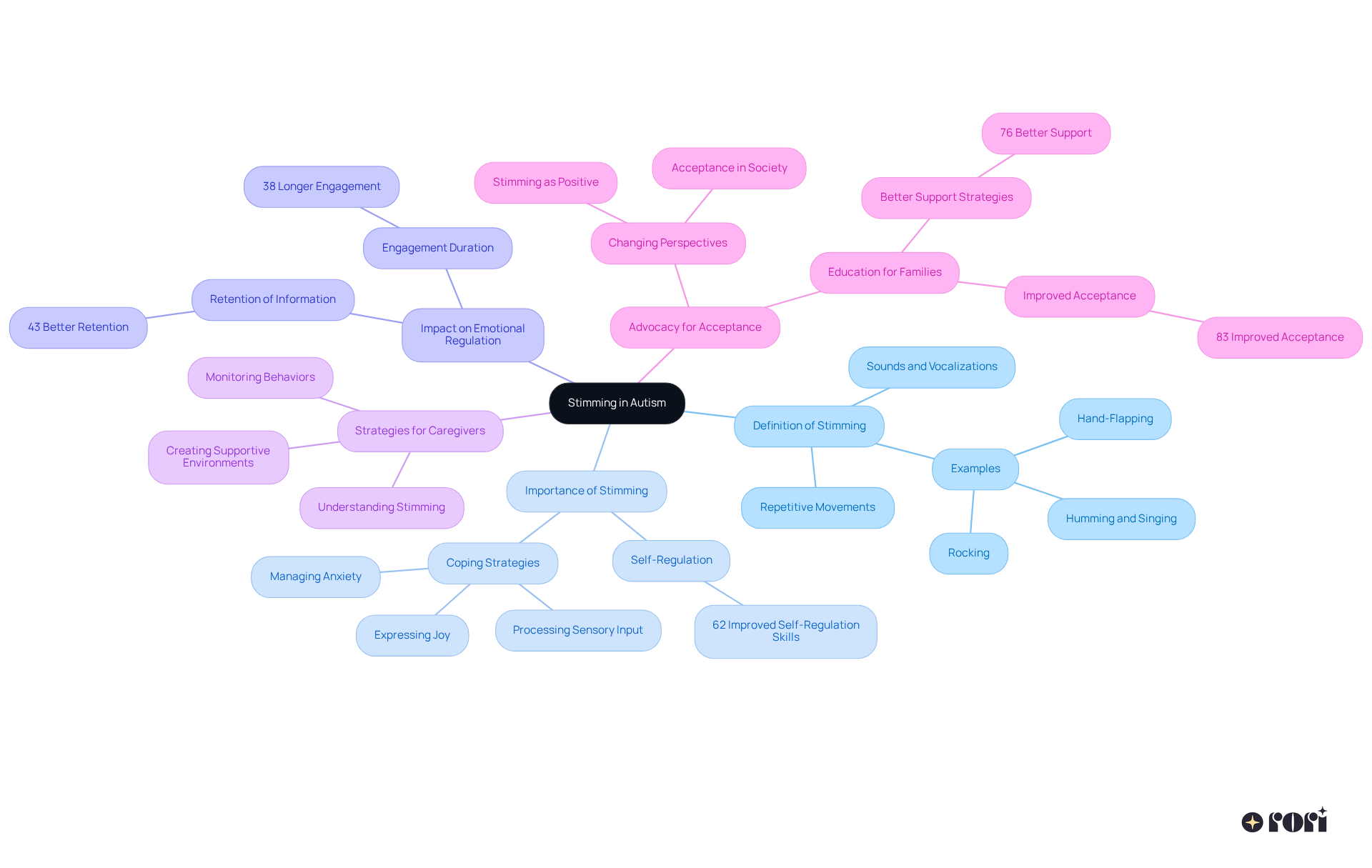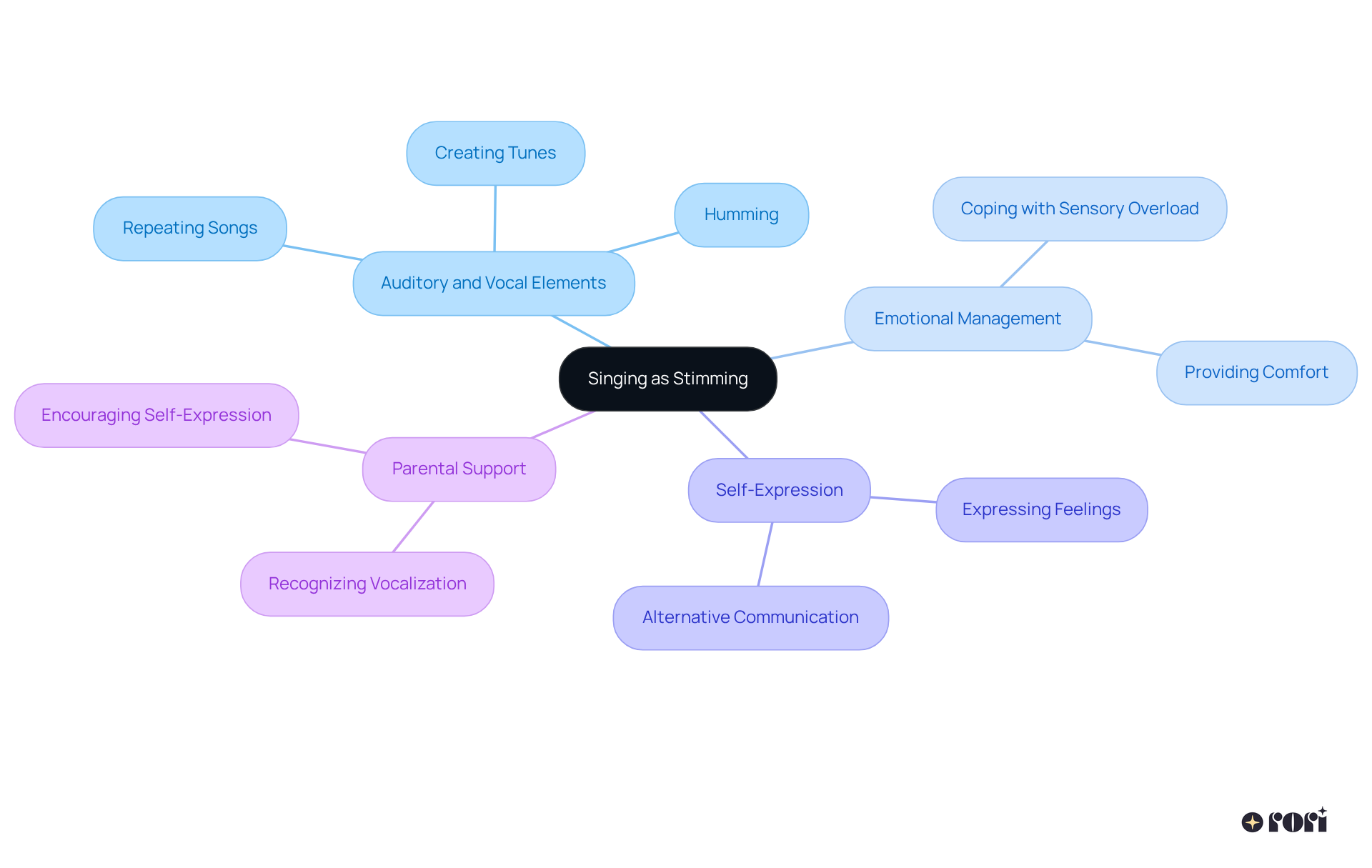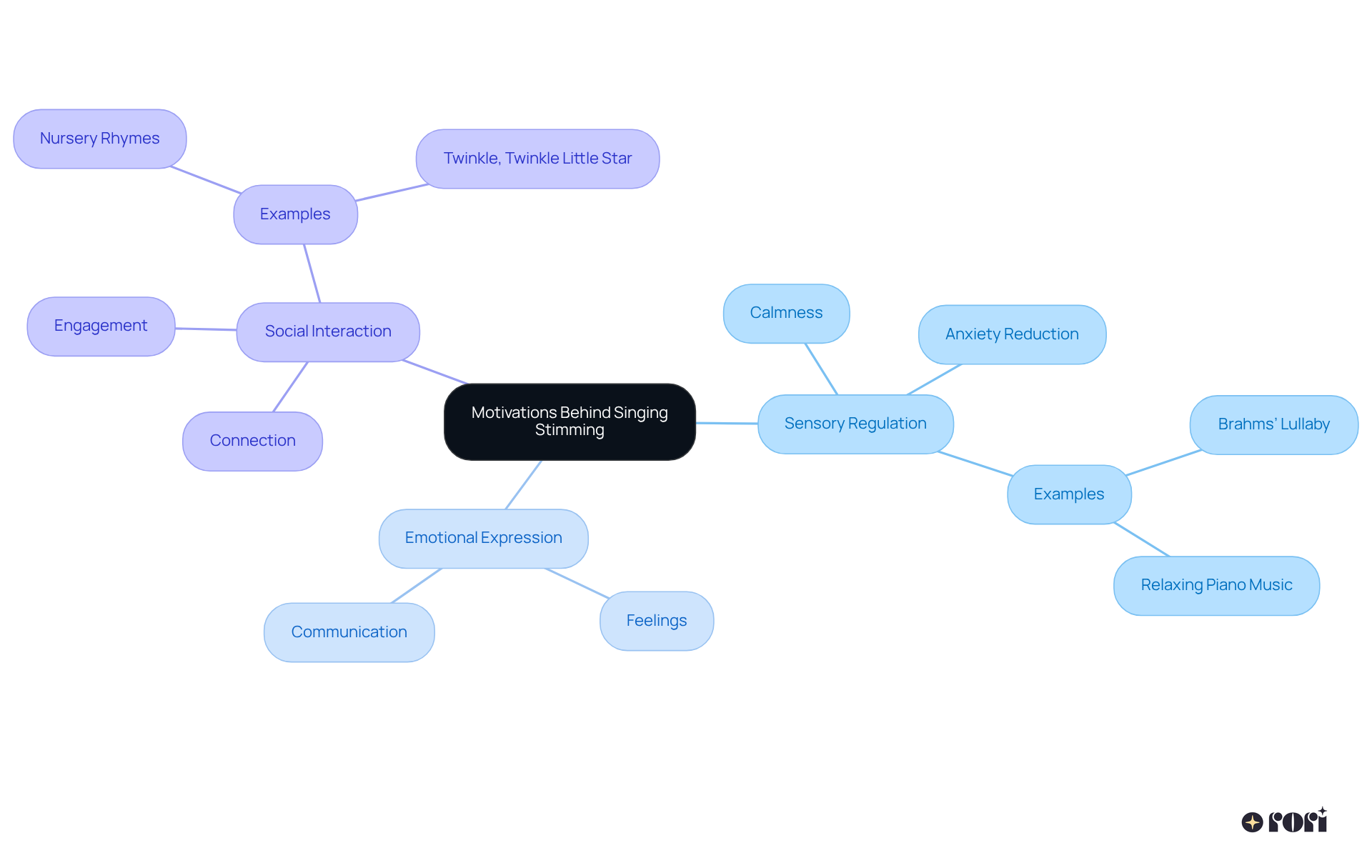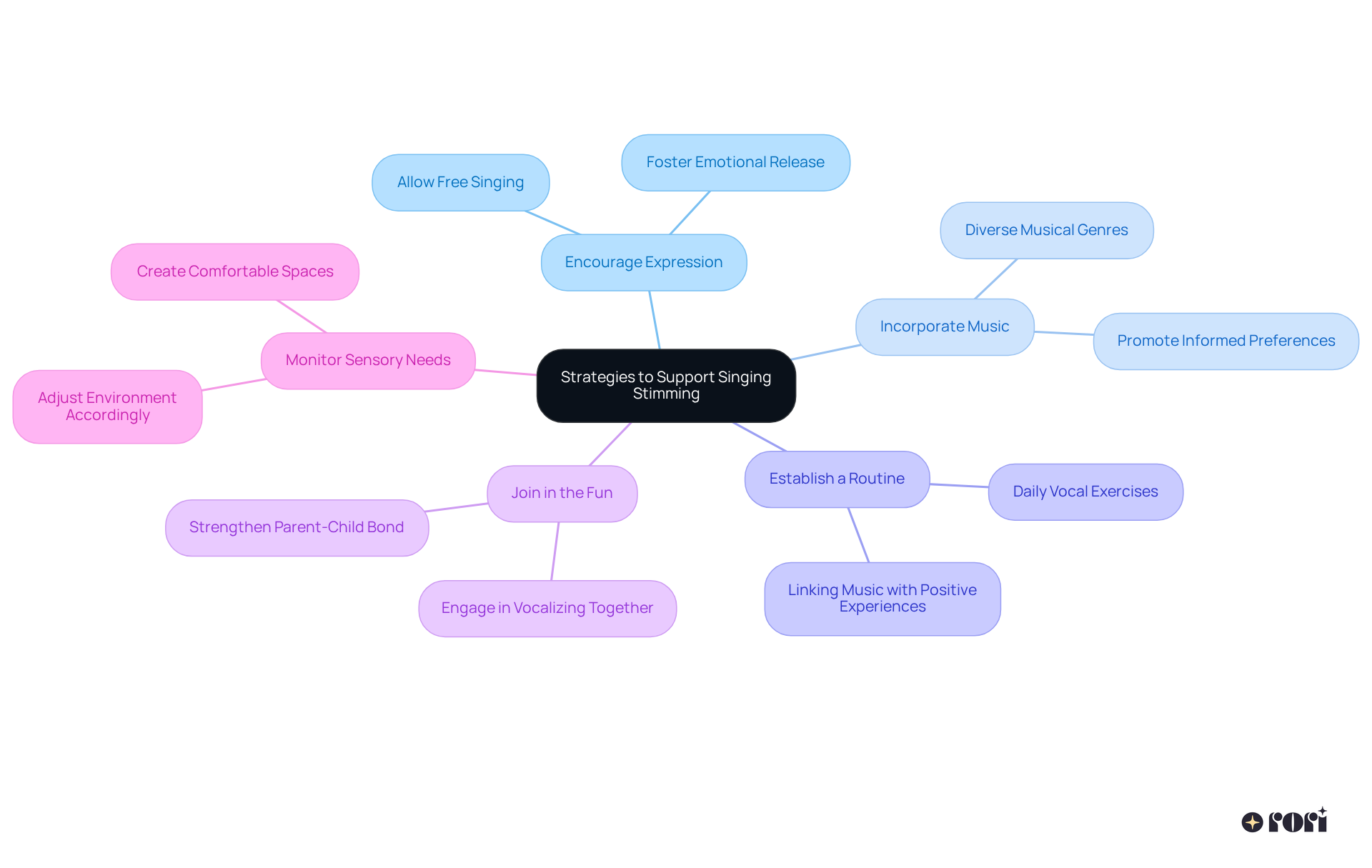Did you know that singing can be a wonderful form of stimming for children with autism? It acts as a self-soothing tool, helping them express their emotions and regulate their sensory experiences.
Let’s explore this together!
Understanding the nuances of stimming—self-stimulatory behaviors often exhibited by individuals with autism—can truly open up a world of emotional and sensory support for our children. Among these behaviors, singing stands out as a unique and powerful form of vocal expression. It offers kids a soothing outlet to navigate their feelings and sensory experiences. But how can we, as parents, effectively support and encourage this form of self-soothing while ensuring our child's emotional well-being?
Exploring the motivations behind singing stimming can be enlightening! By implementing practical strategies, we can empower ourselves as caregivers to create a nurturing environment that celebrates our child's individuality and enhances their development. Let’s explore this journey together!
Stimming, or self-stimulatory behavior, includes those repetitive movements or sounds that many individuals with autism often display—think hand-flapping, rocking, or even humming and singing. These behaviors can play a significant role, helping with self-regulation, sensory stimulation, and expressing feelings. For kids with autism, these self-soothing behaviors are crucial coping strategies, aiding in managing anxiety, processing sensory input, and expressing joy.
Recent studies have shown that sensory self-soothing can really boost emotional regulation. In fact, 62% of autistic children showed improved self-regulation skills when they understood their sensory needs! Plus, when kids are allowed to self-regulate during learning activities, they retain information better—43% more effectively—and engage for 38% longer.
Experts highlight the importance of embracing self-stimulatory behaviors as a natural part of autistic neurology. Many autistic adults advocate for recognizing these behaviors as positive rather than negative. Dr. Hanks points out that if self-stimulatory behavior isn’t genuinely hindering learning or work, society should be more accepting of it.
Understanding these repetitive behaviors is vital for parents and caregivers. It helps cultivate appreciation for how their child interacts with the world, enabling them to provide effective support tailored to their needs. By equipping caregivers with knowledge and skills based on ABA principles—like strategy alignment and data collection—they can actively support their child's behavioral goals.
For instance, caregivers can keep an eye on self-stimulatory behaviors and their contexts to spot patterns and adjust strategies accordingly. This way, they create a consistent and supportive environment that enhances the effectiveness of interventions. Let’s explore this together and see how we can make a difference!

For many kids on the autism spectrum, a wonderful way to soothe themselves is singing stimming. Unlike more physical self-stimulatory behaviors, vocalizing has both auditory and vocal elements, allowing children to express their feelings in a unique way. You might notice this as they are singing stimming by repeatedly singing a favorite song, humming melodies, or even creating their own tunes.
Research shows that vocal self-soothing, like chanting, can help manage emotions and provide comfort during tough times. For many young individuals, vocal expression is singing stimming, which serves as a reliable and calming outlet to help them navigate sensory overload and their feelings more effectively.
It’s important for parents to recognize vocalization as a valid self-soothing method. This acknowledgment can encourage self-expression and promote mental well-being, allowing children to share their emotions in a safe and enjoyable way. So, let’s explore this together and see how we can support our little ones in their journey!

Children may engage in vocal stimming, which is singing stimming, for various reasons including sensory regulation, emotional expression, and even social interaction! Research shows that singing stimming can really help kids manage sensory overload. It provides a familiar auditory stimulus that encourages a sense of calm. For instance, soothing tunes like 'Brahms’ Lullaby' can significantly reduce anxiety and stress in young ones with ASD.
This kind of auditory engagement actually stimulates both sides of the brain, which is fantastic for emotional processing and communication. Plus, vocalizing, which is singing stimming, is a powerful way for kids to express their feelings, especially when they find it hard to articulate them with words. How wonderful is that?
And let’s not forget about social interaction! When kids are singing stimming together with friends or family, it fosters connection and engagement. Nursery rhymes like 'Twinkle, Twinkle Little Star' are not just fun; they also support vocabulary development. This shows just how educational vocalization can be!
Understanding these motivations can really help parents appreciate the value of vocal repetition. It’s a great way to encourage healthy development in their children. So, let’s explore this together and see how vocalization can be a constructive and beneficial practice for your little ones!

To effectively support their child's experience, parents can adopt several strategies that enhance singing stimming and empower them as caregivers.
Encourage Expression: Allow your child to sing freely without interruption. This creates a safe space for self-expression, fostering emotional release and creativity, which is crucial for their development.
Incorporate Music: Introduce a diverse range of musical genres and songs. This broadens their musical repertoire and opens new avenues for stimming, enhancing their engagement with music and promoting informed decision-making about their preferences.
Establish a Routine: Incorporate vocal exercises into daily activities, such as during transitions or calming periods. Linking vocalization with positive experiences can help your little one feel more secure and at ease expressing themselves through music. This consistency can strengthen professional interventions too!
Join in the Fun: Actively engage in vocalizing with your child. This validates their behavior, strengthens your bond, and encourages social interaction, which is crucial for their development. Your involvement can lead to improved behavioral outcomes as you align with therapeutic strategies.
Monitor Sensory Needs: Be attentive to your child's sensory preferences and adjust the environment accordingly. If they appreciate quiet sounds, create a calm environment that enables them to participate in this activity comfortably. This empowers you as a caregiver to make informed adjustments.
Applying these strategies can greatly assist your young one's singing stimming, which fosters well-being and improves their overall development. Research indicates that music therapy can lead to substantial improvements in social interaction and emotional expression among children with autism, showing a medium to large effect size (d = 0.73, CI [0.43-1.03]) from recent meta-analyses. Plus, case studies have shown that incorporating songs into daily routines can facilitate independence and enhance social skills. How valuable is that? Let’s explore this together!

Singing is such a wonderful and beneficial way for many children on the autism spectrum to engage in stimming. It provides them with an outlet to express their emotions, manage sensory overload, and connect with others in a comforting and enjoyable manner. By recognizing singing as a valid self-soothing behavior, parents and caregivers can better support their children's emotional and developmental needs.
Throughout this article, we’ve highlighted the importance of stimming behaviors, especially singing. These vocalizations can truly help with emotional regulation, improve communication skills, and foster social interactions. By encouraging free expression, introducing a variety of music, and actively participating in singing activities, caregivers can create a nurturing environment that celebrates their child's unique way of engaging with the world.
Ultimately, embracing singing as a form of stimming not only supports children on their journey but also reinforces the idea that self-stimulatory behaviors are essential for their development. By cultivating an appreciation for these behaviors, parents can help their children thrive, promoting a sense of belonging and emotional well-being. Encouraging singing stimming goes beyond being just a coping mechanism; it opens up pathways to deeper connections and enriches the life experiences of children with autism. Let’s explore this together and continue supporting our children in the best ways possible!
What is stimming and why is it important in autism?
Stimming, or self-stimulatory behavior, refers to repetitive movements or sounds, such as hand-flapping, rocking, humming, or singing, commonly displayed by individuals with autism. It plays a significant role in self-regulation, sensory stimulation, and emotional expression, serving as crucial coping strategies for managing anxiety and processing sensory input.
How does stimming affect emotional regulation in autistic children?
Recent studies indicate that sensory self-soothing behaviors can enhance emotional regulation. Specifically, 62% of autistic children showed improved self-regulation skills when they understood their sensory needs.
What impact does allowing stimming have on learning?
Allowing children to self-regulate through stimming during learning activities leads to better information retention—43% more effectively—and longer engagement—38% longer.
How do experts view self-stimulatory behaviors in autistic individuals?
Experts emphasize the importance of embracing self-stimulatory behaviors as a natural aspect of autistic neurology. Many autistic adults advocate for recognizing these behaviors as positive unless they hinder learning or work.
Why is it important for parents and caregivers to understand stimming?
Understanding stimming helps parents and caregivers appreciate how their child interacts with the world, enabling them to provide tailored support. This knowledge fosters effective strategies based on ABA principles to support their child's behavioral goals.
What strategies can caregivers use to support children who stim?
Caregivers can observe self-stimulatory behaviors and their contexts to identify patterns, allowing them to adjust strategies accordingly. This approach helps create a consistent and supportive environment that enhances the effectiveness of interventions.